The Audubon Mural Project Brings Threatened Birds Back to New York City
From purple finches to whiskered screech owls, artists are expanding a colorful flock of public artworks in Upper Manhattan
/https://tf-cmsv2-smithsonianmag-media.s3.amazonaws.com/filer/59/08/5908abf8-7f26-4b11-acd1-1c7a31f86296/american_black_duck_peter_daverington_mike_fernandez_1.jpg)
New York City is a far cry from the places many people think about when it comes to bird-watching, but if a group of artists has its way, that could very well change. Since 2014, Avi Gitler, an art dealer and the owner of Gitler &____, an art gallery located in the Upper Manhattan neighborhood of Hamilton Heights, has been working with the National Audubon Society to recruit artists to create colorful murals and other public art pieces focused on a single subject matter: birds. More specifically, avian species that have been affected by climate change.
While that specificity might seem like a tall order, unfortunately it’s not, with hundreds of species fitting the bill and new ones joining the ranks each year, according to the nonprofit environmental organization, whose mission is to protect birds and conserve their habitats. To help bring focus to the importance of protecting these species, the Audubon Mural Project, an initiative that has given rise to 90 murals depicting 127 different bird species across Upper Manhattan and beyond, was formed in 2014.
Many of the species featured in the project, including the yellow-and-black evening grosbeak and rose-colored purple finch, are representative of the millions of migrating birds that fly above the city. Several new murals have been added to the collection this summer, including White-tailed Hawk by TOTEM, a Washington Heights-based artist whose background is in aerosal art. He chose this bird for “its beauty and power.” The mural is located at 562 W. 164th St., a few blocks from New York-Presbyterian Hospital where the artist works as part of its bone marrow transplant team. Another new edition to the collection is the Ringed Kingfisher by Geobany Rodriguez, a NYC native whose artwork has been featured at the now defunct 5 Pointz and the Bushwick Collective. His work is located at 500 W. 175th St. More artworks are planned in the coming months on the sides of residential buildings, storefronts, metal rolldown shutters, and any other surface prime for a splash of color.
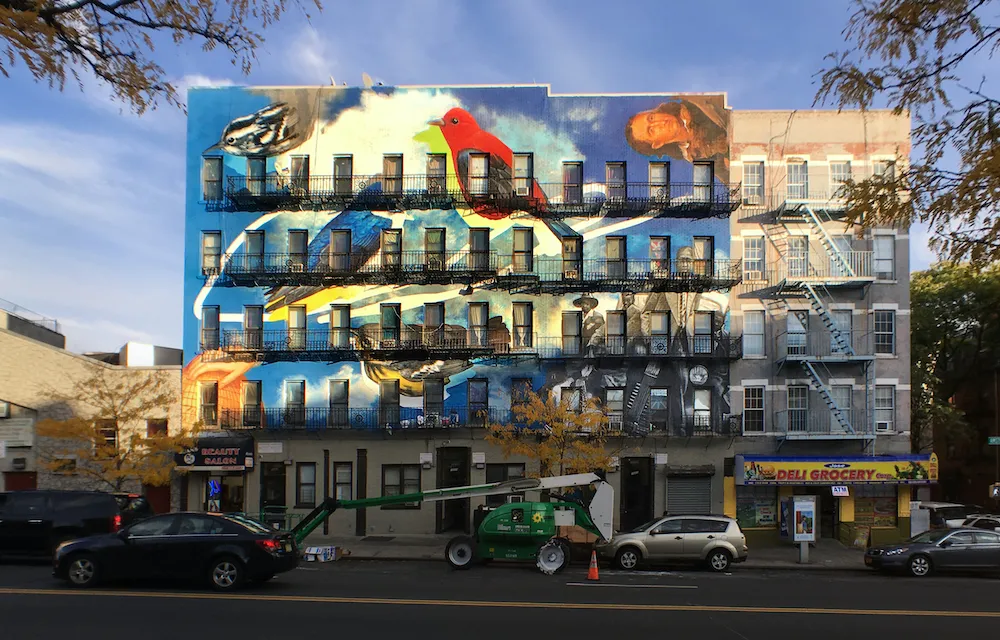
Gitler got the idea to make birds his muse around the same time that he opened his art gallery in 2014. Boy Kong, a Florida-based artist he has working with at the time, suggested he paint a flamingo mural. (“To bring some Florida flavor to New York City,” Gitler says.) In 2014, the flamingo at 3631 Broadway was replaced by a Tundra Swan, also by Boy Kong, and later replaced again by a Whiskered Screech Owl by NYC graffiti artist Snoeman.
“[The National Audubon Society] saw the mural and approached me about doing a public art series throughout the neighborhood focused on threatened birds,” Gitler says. “We were really partners from the very beginning.”
Coincidentally, Gitler's gallery was located in Washington Heights near Audubon Avenue, a north-south thoroughfare running between West 193rd Street and St. Nicholas Avenue honoring the late naturalist John James Audubon. Audubon, perhaps most famous for his book The Birds of America, an illustrated compendium featuring 435 life-size watercolors of North American birds revered by both orintholigists and non-birders alike, purchased an estate nearby in 1842 where he painted until his death in 1851. His many contributions to the field of orinthology and conservation in general led him to become the Audubon Society’s namesake, even though it was founded in 1905, more than a half century after his death. In more recent years, Audubon's contributions have been put into question as his racism and fraudulent practices have come to light. He enslaved people, and as a recent Audubon Magazine article by J. Drew Lanham, a former board member for the National Audubon Society, states, “The founding father of American birding soared on the wings of white privilege.”
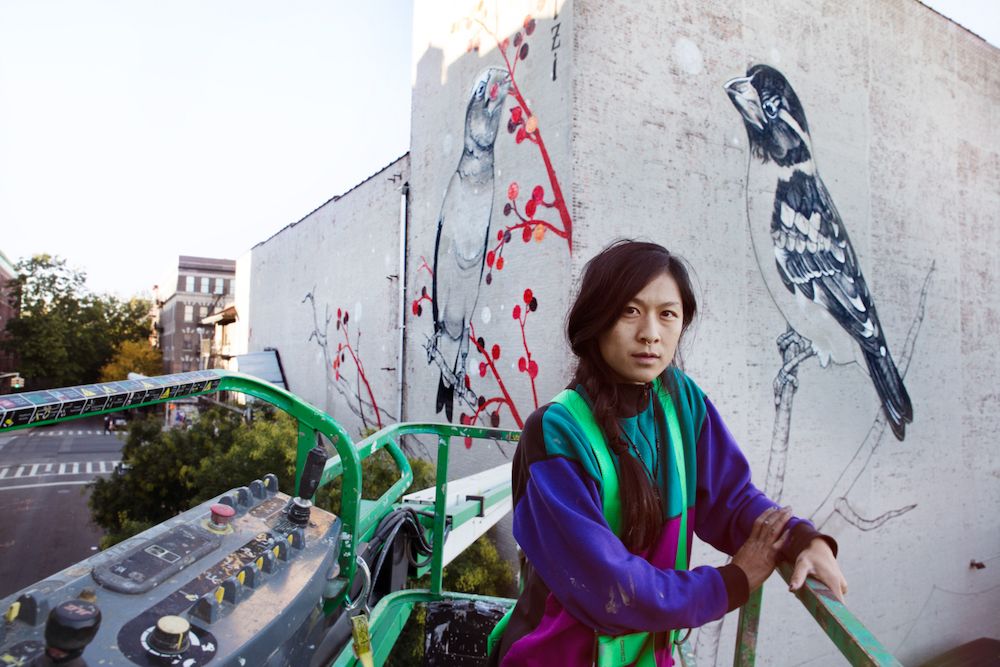
To keep abreast of which birds are threatened, Gitler works directly with Jennifer Bogo, vice president of content for the National Audubon Society, who provides him with an up-to-date report of species that fit the criteria. The interactive “Survival By Degrees” climate report by Audubon scientists takes into account 140 million observations recorded by birders and scientists alike. The current list contains 389 species. According to the report, “two-thirds of North American birds are at increasing risk of extinction from global temperature rise,” making the initiative and the public awareness it brings even more imperative.
“This list is conservative,” Bogo says. “The analysis looks at climate and how it can shift in a species’ current habitat. It also looks at [a species’] vulnerability and effects of climate change, wildfires, heavy rainfall, [and other variables] that can impact the habitat and food it needs to survive.”
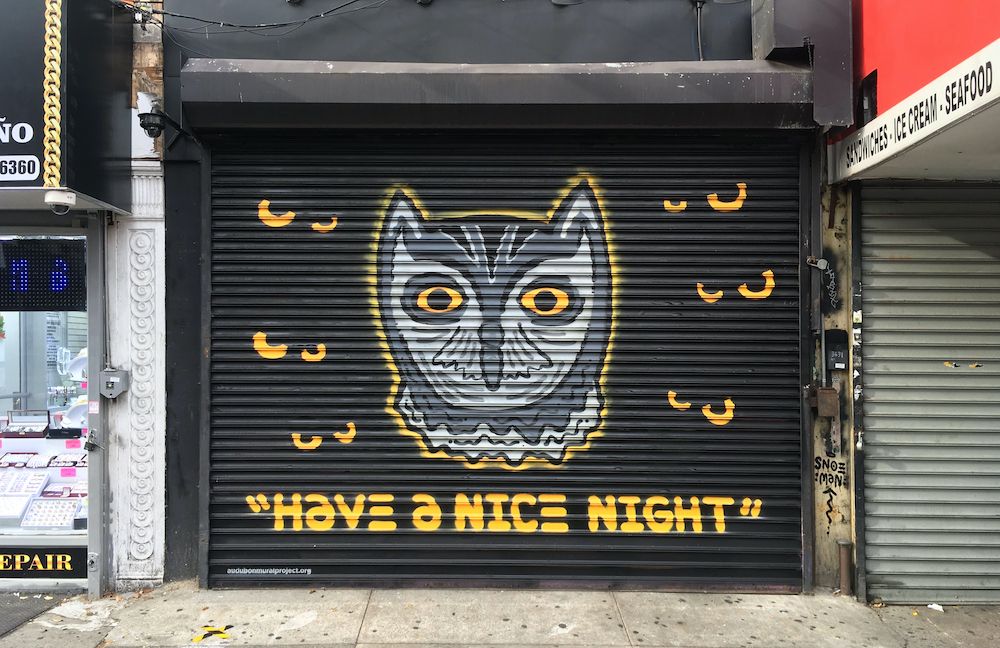
Similar to an avid birdwatcher, Gitler took the report and began adding different species to his birding life list. Instead of trying to scout them out from behind a pair of binoculars, he was reaching out to his own contacts in the art world and inviting them to contribute to the project.
“[We figured] why paint one species when you can do many?” Bogo says. “[Gitler] gamely agreed to do this enormous project with us.”
As the project expanded, so did public interest, with colorful murals of the American oystercatcher, bald eagles and cerulean warblers embellishing public spaces throughout Upper Manhattan, from Hamilton Heights to Harlem.
“It’s been exciting watching the way the project has continued to grow in unexpected directions,” Bogo says. “Local schools have worked the project into their curriculums, and people have approached us about extending the murals outside of New York City. The project has given us the opportunity to reach a new audience and community, while connecting them to local birds and starting the conversation about how climate change affects both people and birds.”
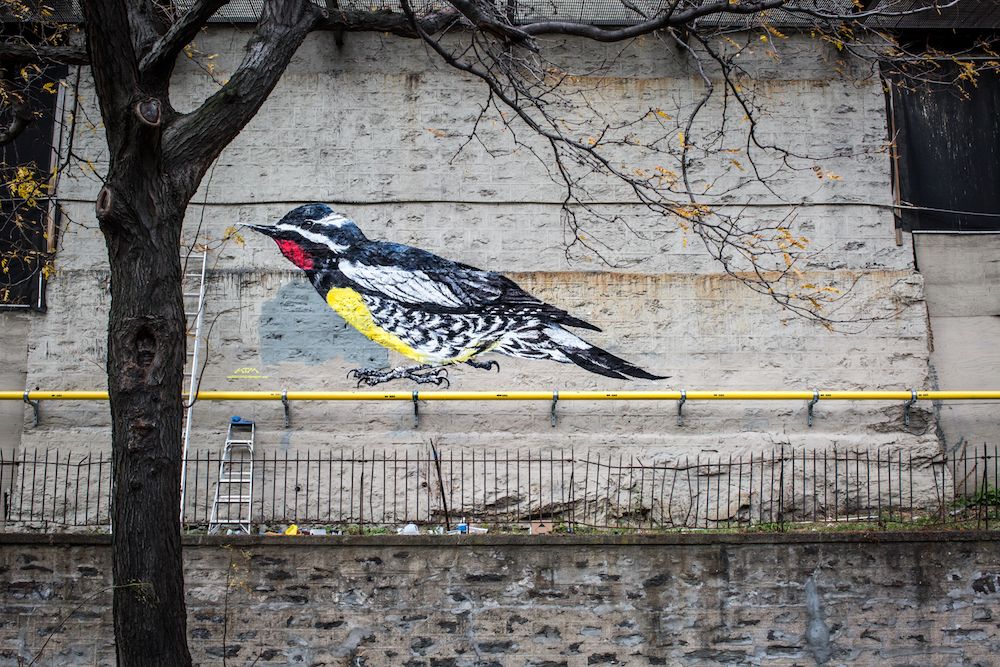
In March 2018, NYC Audubon, a local chapter of the society, began weekly walking tours to more than two dozen of the murals. (Editor’s note: The tours are currently on hiatus due to the Covid-19 pandemic, but a printable map showing all of the artworks can serve as a guide.) Highlights include William's Sapsucker by ATM at 663 W. 158th St., Endangered Harlem by Gaia covering the length of three attached apartment buildings (1883, 1885, and 1887 Amsterdam), and Evening Grosbeak and Black-headed Grosbeak by Ouizi at 1805 Amsterdam Avenue. The Audubon Mural Project has since expanded to locations outside New York, including Chicago’s Rogers Park neighborhood and Rockford, a town in northern Illinois, and more recently on Vashon Island, Washington.
“I don’t think we’ll ever run out of birds,” Gitler says. “I expect for this project to go on for a while. Artists will regularly approach me concerned about the list and what they can do to make change.”
One of those artists is Jessica Maffia, a self-proclaimed “bonafide bird nerd” and native New Yorker who lives in Washington Heights. She met Gitler while doing an artist’s residency on the 172-acre Governor’s Island in New York Harbor. Early in 2020, during quarantine, Maffia began birdwatching as a way to stay creative, since she wasn’t able to go to her artist studio.
“I took a birdsong identification class last spring and was amazed by how many species I found in my local park,” Maffia says. “Before [the pandemic], I didn’t really notice birds, I had nature blindness for the first 30 years or so of my life. Soon I would walk around a single city block and hear and see birds, and suddenly I had this ravenous hunger for nature.”
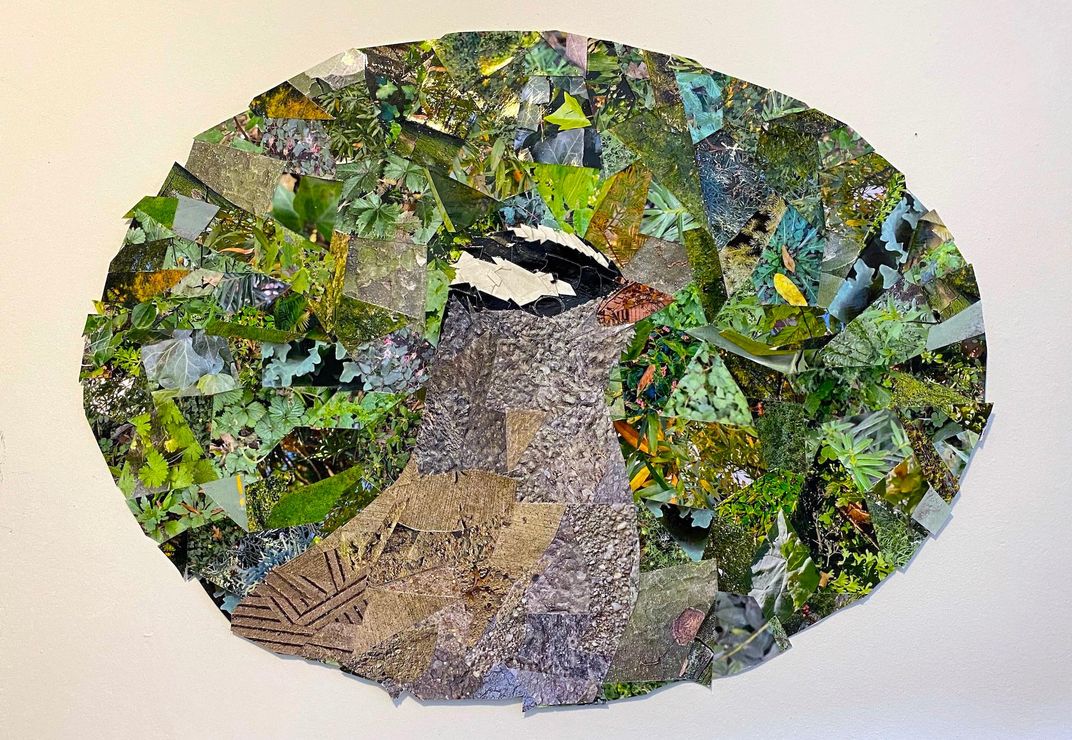
Maffia is creating two pieces for the project. The first, White-crowned Sparrow, is located at Broadway and 164th Street and is a collage of scraps of photos she took of different aspects of nature—trees, birds, the sky—on every city block span of Broadway, a major thoroughfare that runs the length of Manhattan. The second, Robin’s Song Embrace, is a large-scale mosaic on a 16-foot-by-10-foot wall at 630 W. 173rd Street. Designed to look like clouds, the piece is comprised of hundreds of shards of broken glass Maffia collected in her local park in Washington Heights. She hopes to install it by the end of October.
“I spent so much time in the park during the pandemic trying to come up with an idea for this project,” she says. “The park is riddled with glass and garbage, and one day I spotted a river of glass gleaming in the grass. It’s a very ambitious piece and will be the first entirely abstract mosaic for the project.”
Like Maffia, Gitler says that he wasn’t always passionate about birding, but the project spurred something inside of him and his interest soon took flight.
“Before, I wasn’t interested in birds any more than the average American,” Gitler says. “But now I have a newfound love for birds. I even own a pair of binoculars to watch spring migrations.”
Planning Your Next Trip?
Explore great travel deals
Smithsonian magazine participates in affiliate link advertising programs. If you purchase an item through these links, we receive a commission.